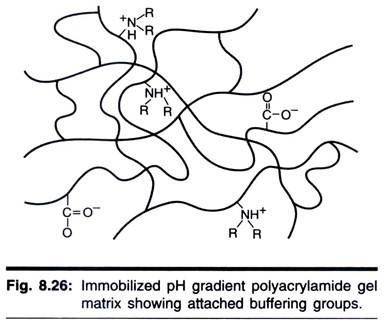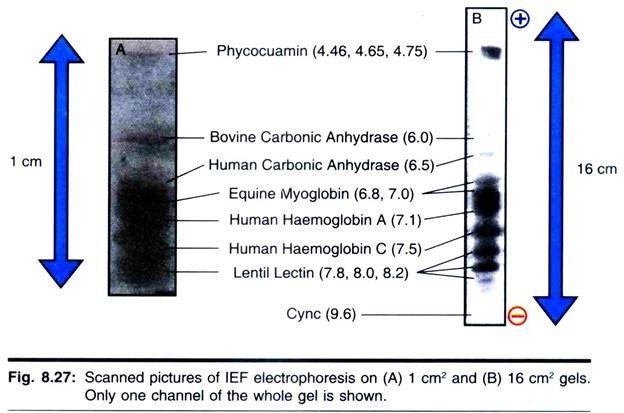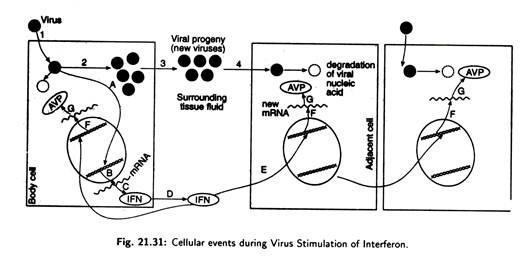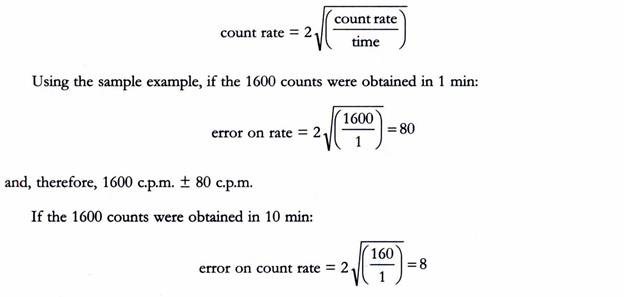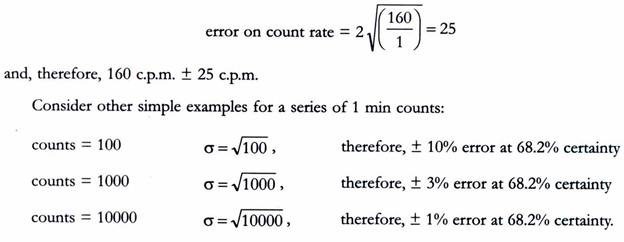In this article we will discuss about:- 1. Definition of Acid-Base Homeostasis 2. Response to an Acid-Base Imbalance 3. Regulation.
Definition of Acid-Base Homeostasis:
Acid-base homeostasis is the part of human homeostasis concerning the proper balance between acids and bases, in other words, the pH. The body is very sensitive to its pH level, so strong mechanisms exist to maintain it. Outside the acceptable range of pH, proteins are denatured and digested, enzymes lose their ability to function, and death may occur.
What is pH?
The term pH refers to the negative log of hydrogen ion concentration-
pH = log 1/H+ = – log [H+]
Normal H+ is 40 nEq/L.
Normal pH is
pH = – log [0.00000004]
pH = 7.4
The normal range of blood pH falls between 7.35 and 7.45 and our Acid-base balance has to maintain pH within this normal range.
pH of Some Body Fluids:
Arterial blood – 7.4
Venous blood – 7.35
Interstitial fluid – 7.35
ICF – 6 – 7.4
Urine – 4.5 – 8
Gastric HCl – 0.8
Survival range of pH is – 6.8 to 8.0
Acid:
An acid is a molecule containing hydrogen atom that can release hydrogen ions in solutions, e.g.
HCI → H+ + Cl–
H2CO3 → H+ + HCO3
There is always a constant production of acid by the body’s metabolic processes and to maintain balance, these acids need to be excreted or metabolized. The various acids produced by the body are classified as respiratory (or volatile) acids and metabolic (or fixed) acids.
Respiratory Acid:
The acid is more correctly carbonic acid (H2CO3) but the term ‘respiratory acid’ is usually used to mean carbon dioxide. Carbon dioxide is the end-product of complete oxidation of carbohydrates and fatty acids. It is called a volatile acid meaning in this context it can be excreted via the lungs. Of necessity, considering the amounts involved there must be an efficient system to rapidly excrete CO2.
Metabolic Acids:
This term covers all the acids the body produces which are nonvolatile. Because they are not excreted by the lungs they are said to be ‘fixed’ in the body and hence the alternative term fixed acids. All acids other than H2CO3 are fixed acids.
For Acid-base balance, the amount of acid excreted per day must equal the amount produced. The routes of excretion are the lungs (for CO2) and the kidneys (for the fixed acids).
Acid-Base Imbalance:
Acid-base imbalance occurs when a significant insult causes the blood pH to shift out of the normal range (7.35 to 7.45). An excess of acid is called acidosis (pH less than 7.35) and an excess of base is called alkalosis (pH greater than 7.45). The process that causes the imbalance is classified based on the etiology of the disturbance (respiratory or metabolic) and the direction of change in pH (acidosis or alkalosis).
There are four basic processes:
(i) Metabolic acidosis,
(ii) Respiratory acidosis,
(iii) Metabolic alkalosis, and
(iv) Respiratory alkalosis.
One or a combination may occur at any given time.
Response to an Acid-Base Imbalance:
The body’s response to a change in Acid-base status has three components:
1. First Defence:
Buffering.
2. Second Defence:
Respiratory compensation by alteration in arterial PCO2
3. Third Defence:
Renal compensation by alteration in HCO3– excretion.
Buffer:
Body Fluid:
A buffer is any substance that can reversibly bind H+. Buffer + H+ ↔ H buffer
80 mEq of H+ are produced per day.
1. Bicarbonate Buffer System:
The major buffer system in the ECF is the CO2-bicarbonate buffer system. This is responsible for about 80% of extracellular buffering but it cannot buffer respiratory Acid- base disorders.
2. Phosphate Buffer Systems:
The phosphate buffer systems are not important blood buffer as its concentration is too low. It plays an important role in renal tubular system.
3. Hemoglobin:
Protein buffers in blood include hemoglobin (150 g/1) and plasma proteins (70 g/1). Buffering is by the imidazole group of the histidine residues. Hemoglobin is quantitatively about 6 times more important than the plasma proteins as it is present in about twice the concentration and contains about three times the number of histidine residues per molecule. For example, if blood pH changed from 7.5 to 6.5, hemoglobin would buffer 27.5 mmol/1 of H+ and total plasma protein buffering would account for only 4.2 mmol/1 of H+. Deoxyhemoglobin is a more effective buffer than oxyhemoglobin.
‘Whenever, there is a change in H+ concentration in the ECF, the balance of all the buffer systems changes at the same time’.
H+ = K1 × HA1/A1 = K2 × HA2/A2 = K3 × HA3/A3.
K1, K2 and K3 are dissociation constants of 3 respective acids.
Regulation of Acid-Base Balance:
I. Respiratory Regulation of Acid-Base Balance:
i. Regulates H+ concentration through CO2 in ventilation.
ii. ↑ [H+] → ↑ alveolar ventilation
iii. Buffering power of respiratory system is 1-2 times greater than chemical buffers.
iv. Lung diseases decrease the efficacy of the buffering power. Respiratory regulation refers to changes in pH due to PCO2 changes by altering the ventilation. This change in ventilation can occur rapidly with significant effects on pH. Carbon dioxide is lipid soluble and crosses cell membranes rapidly, so changes in PCO2 result in rapid changes in [H+] in all body fluid compartments.
II. Renal Regulation of Acid-Base Balance:
There are three systems that regulate H+ concentration in the body fluids to prevent acidosis or alkalosis.
1. The chemical Acid-base buffer systems which combine with acid or base to prevent excessive changes in H+ concentration.
2. The respiratory centers which regulates the removal of CO2 from ECF.
3. The kidneys regulate blood pH by three mechanisms.
i. The chemical Acid-base buffer systems which combine with acid or base to prevent excessive changes in H+ concentration.
ii. The respiratory centers which regulates the removal of CO2 from ECF.
iii. CO2 + H2O ↔ H2CO3
a. Excretion of acid in the form of titrable acid and ammonium ions.
b. Reabsorption of the filtered HCO3
c. Generation of new NaHCO3
Mechanism of H+ Secretion by PT:
i. Formation of carbonic acid
ii. Secretion of H+ into the lumen via Na+ H+ counter-transport in luminal membrane—an example of secondary active transport.
iii. H+ secreted in the lumen combines with filtered HCO3 and helps in reabsorption.
iv. HCO3 formed in the cell diffuses into interstitial fluid through basolateral membrane. This is done by Na HCO3 transport and CI HCO3 exchanger. Thus for each H+ secreted one Na+ and one HCO3 ion enter the interstitial fluid.
Fate of H ion into the Lumen:
1. Nontitrable acidity
2. Titrable acidity
1. Nontitrable Acidity:
H+ ion combines with HCO3 and NH3 producing non-titrable acids. The reactions are:
The process by which NH3 is secreted into the urine and then changed to NH4 maintaining the concentration gradient for diffusion of NH3 is called nonionic diffusion.
Ammonium Ion Secretion:
Glutamine is metabolized in PCT cells yielding ammonium and bicarbonate. The NH4+ is actively secreted by Na+ NH4+ pump and bicarbonate is returned to blood.
Ammonium Ion Secretion in CD:
The CD is permeable to NH3 which diffuses into tubular lumen but less permeable to NH4, therefore, NH4 is trapped in the tubular lumen and excreted in the urine.
2. Titrable Acidity:
The H+ ions that combine with dibasic phosphate produce monobasic phosphate which contributes titrable acidity.
Net acid secretion = Titrable + urinary NH4 – urinary HCO3 acidity
Total acid excreted by the kidney = 50 to 100 mEq/day.
Mechanism of H+ Secretion by DT and CD is independent of Na+:
i. ATP driven pumps increase H+ concentration by 1000 times. Aldosterone acts on this pump to increase H+ secretion.
ii. H+ K+ ATPase is also responsible.
Reabsorption of Filtered HCO3:
PT reabsorbs 80% of filtered HCO3, H+ secreted in lumen of PT combines with HCO3 to form H2CO3. It is converted to CO2 and H2O. CO2 diffuses into tubular cells. CO2 combines with H2O to form H2CO3 which dissociates into H+ and HCO3.
The H+ ion is secreted into tubule and HCO3 ion diffuses into interstitial fluid. When each molecule of HCO3 is reabsorbed into lumen, one molecule of HCO3 diffuses into blood even though it is not the same molecule. The pH of fluid in proximal tubule is very little altered since the H+ ion secretion is neutralized by HCO3 ion reabsorption.
LOH reabsorbs 15% of filtered HCO3.
DT and CT reabsorb only 5% of the filtered HCO3.
Generation of New NaHCO3 Ions:
Phosphate and ammonia buffers in the tubule carries excess H+ ions to generate new NaHCO3 ions. Therefore, whenever H+ ion secreted into the tubules combines with a buffer other than HCO3, the net effect is addition of new bicarbonate to the blood. For examples if H+ reacts with NH3 to form NH4, NH4 is trapped in the tubular lumen and eliminated in the urine. For each NH4 excreted, a new HCO3 is generated and added to the blood.
Kidneys filter 4320 mEq of HCO3–/day.
(180 L × 24 mEq/L)
To reabsorb 4320 mEq of HCO3, equal amount of H+ are secreted.
In addition, 80 mEq of H+ from nonvolatile acids are also secreted, making the total of 4400 mEq of H+ to be secreted/day. Only a small amount of excess H+ can be secreted in ionic form in the urine. Minimal urine pH is about 4.5 corresponding to an H+ concentration of 0.03 mEq/L. For every liter of urine only 0.03 mEq of H+ can be excreted.
To excrete 80 mEq of H+, 2667 liters of urine would have to be formed.
Acidosis:
Defined as an increase in H+ concentration or decrease in pH (<7.4).
Alkalosis:
Defined as a decrease in H+ concentration or increase in pH (>7.4).
Metabolic:
Any disturbance of Acid-base balance resulting from changes in HCO3– concentration in ECF.
Metabolic Acidosis:
Decrease in plasma HCO3–
Metabolic Alkalosis:
Increase in plasma HCO3–.
Respiratory:
Disturbances in Acid-base balance due to changes in PCO2.
Respiratory Acidosis:
Increase in PCO2
Respiratory Alkalosis:
Decrease in PCO2.
Renal Correction:
Alkalosis:
Either a decrease in tubular secretion of H+ or increased excretion of HCO3–.
Acidosis:
Either an increase in excretion of H+ or by generation of new HCO3–.
Respiratory Acidosis:
Any factor that decreases the rate of pulmonary ventilation increases the PCO2 of ECF → ↑ H2CO3 → ↑ H+.
Causes:
i. Damage to respiratory center.
ii. Obstruction of passages of the respiratory tract.
iii. Pneumonia.
iv. Emphysema.
Respiratory Alkalosis:
Caused by:
i. Hyperventilation.
ii. Physiologically at high altitudes.
iii. Psychoneurosis.
Metabolic Acidosis:
Causes:
i. Failure of kidneys to excrete metabolic acids.
ii. Formation of excess quantities of metabolic acids.
iii. Addition of metabolic acids to the body.
iv. Loss of base from the body.
Renal Tubular Acidosis:
i. Chronic renal failure.
ii. Addison’s disease.
iii. Fanconi’s syndrome.
iv. Diarrhea.
v. Vomiting of intestinal contents.
vi. Diabetes mellitus.
vii. Ingestion of acids (aspirin, methyl alcohol).
Metabolic Alkalosis:
Causes:
i. Excess retention of HCO3–.
ii. Loss of H+ from the body.
iii. Use of diuretics (except carbonic anhydrase inhibitor).
iv. Excess aldosterone.
v. Vomiting of gastric contents.
vi. Ingestion of alkaline drugs.
vii. Treatment of acidosis.
viii. Oral NaHCO3.
ix. Infusion of sodium lactate and sodium gluconate.
Treatment of Alkalosis:
i. Oral ammonium chloride.
ii. Lysine monohydrochloride.
Renal Correction:
↓ Tubular section of H+ ions.
↑ Excretion of HCO3 ions.
Acid-Base Nomogram:
To diagnose acid-base disorders quickly and to find out the severity. pH, PCO2 and HCO3 values are used. Sufficient time should be given for compensatory response. 6-12 hours for lungs and 3-5 days for kidneys.
Nomogram:
Anion Gap:
It is the measure of difference between unmeasured anions and cations.
= (Na+) – (HCO3-) (Cl-)
= 144 – 24 – 108
= 12 mEq/L
Unmeasured cations are Ca++, Mg++ and K+.
Unmeasured anions are albumin, PO4, SO4, etc.
Normal range is 8-16 mEq/L.
Conditions Associated with Increased Anion Gap:
i. DM
ii. Lactic acidosis
iii. Chronic renal failure
iv. Starvation
v. Aspirin poisoning
Conditions associated with Decreased Anion Gap:
i. Diarrhea.
ii. Renal tubular acidosis.
iii. Carbonic anhydrase inhibitors.
iv. Addison’s disease.
